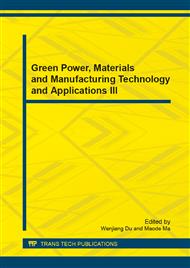p.254
p.259
p.264
p.268
p.272
p.277
p.282
p.286
p.289
Piston Engine Connecting Rod Transient Dynamic Finite Element Analysis and Maintenance Strategy
Abstract:
Connecting rod is the very important connection and force bearing parts of piston engine crank mechanism; work in the role of various kinds of alternating stress. Taking a general rod from Lycoming IO-360-A1B6 aero-piston engine as the analysis object, first, a 3-D finite element model of the rod is established in ANSYS Workbench. And then, considering the influence of gas pressure in cylinder after ignition acting on the connecting rod under engines rated speed conditions, through the transient dynamic analysis, find in all load steps, the maximum equivalent stress occurred at the transition zone between the shaft and little head, and received the maximum equivalent stress versus time curve, to provide numerical basis for improving high-cycle fatigue reliability of the rod. Finally, according to equivalent stress contours of the rod when gas in cylinder peak pressure occurs, initially identified rods hazardous areas,to provide foundation for the development of standard repair process.
Info:
Periodical:
Pages:
272-276
Citation:
Online since:
January 2014
Authors:
Price:
Сopyright:
© 2014 Trans Tech Publications Ltd. All Rights Reserved
Share:
Citation:


